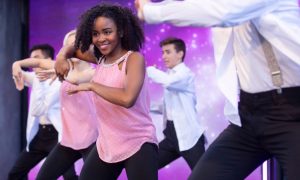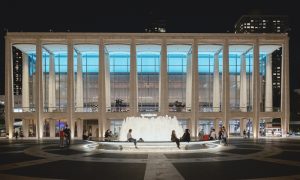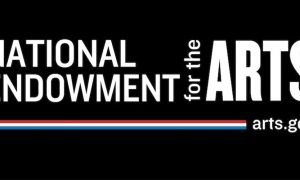The impact of COVID-19 on the dance world is severe and deep. We will undoubtedly see the effects for months and years to come. Unlike many other industries (but not unlike many other performing arts), dance is largely missing from the national conversations surrounding aid and advocacy, at a time when we need it the most.
Recently, given the worldwide protests in support of racial justice, black dancers have rightly claimed a larger digital platform, and in turn elevated the visibility of the entire industry through their voices, performances and demands for equality. Racial discrimination exists in the dance world, as it does everywhere. As such, it requires additional resources and advocacy more specifically targeted to support underserved dancers.
In this time of upheaval, who are the organizations and individuals standing up for dance, and standing up for the long absent equality? What about these challenges and efforts can make the dance world revitalize itself with greater strength, inclusivity and opportunity?
Dance Informa is highlighting some resources and organizations attempting to tackle these two issues here, but this is by no means a comprehensive list.
Many open studios shifted to offering online classes via Zoom. There are plenty of challenges to dancing via this platform, but it provides opportunity to take class from teachers who may be typically out of reach due to geography.
Steps On Broadway, the bastion of open classes in NYC for 40 years, hosts many of the regular in-studio classes for $12, under Virtual Steps. From ballet, to jazz, to theater and hip hop, it’s a great way to experience new sources of inspiration if you don’t happen to live in NYC.
Steezy is an online studio with advanced video instruction focusing on urban styles. Think house, krump, heels, waacking, popping, b-boy – all with options to slow down or speed up the video so you can learn at your own pace. For $20 a month, you can get down all you want.
Gaga Online provides three daily classes for a suggested $5 donation. If space is an issue, the freedom of the technique could be just the thing to work within the confines of your environment.
The Ballet Spot has online classes that bring the fun and fitness to everybody. They also donate monthly to organizations committed to providing for underserved populations under the heading Ballet For A Cause.
Additionally, many teachers and current professional dancers give regular classes on Instagram Live (as well as Zoom). In light of recent protests against racial injustice, some request small donations to be funneled toward advocacy groups supporting the cause.
On Instagram, the account Dancing Alone Together (@dancing.alone.together) started shortly after lockdowns began to organize the myriad class options in one location. These days, the account takes strides to uplift the voices of black dancers and educators, as well as provide a catalog of classes across the country.
But what about government assistance?
The National Endowment for the Arts and the National Endowment for the Humanities each garnered a $75 million dollar award, to be disseminated among non-profit art enterprises via both state aid agencies and grants, although that figure will be shared between all the arts in America and is not equally distributed. For reference, the total number of jobs the arts world employs in the U.S. is just over five million. This fund is part of the Covid Aid, Relief and Economic Security (CARES) Act passed by Congress on March 27. While this effort is helpful, the amount awarded to dance specifically is unknown.
Additionally, unemployment benefits expanded to (somewhat) include self-employed artists and those who work in the gig economy. Practical applications of those benefits vary widely, however. Included in the CARES Act is a $600 weekly additional benefit, although it is currently set to expire at the end of July. Facing the reality that many theaters and companies won’t hold seasons until early 2021 at the soonest, the current packages fall short of supporting millions of people.
The likelihood that both class and performance are months away for many, government assistance is scant, and many dancers have lost second jobs, how is dance in the U.S. functioning now, and what does the future hold?
We don’t know.
But we do know dancers continue to advocate for themselves.
Through various avenues, the dance community has rallied and organized to support the times upon us regarding COVID and increased awareness around the racial inequity in the industry.
There are many grants filling needs, large and small. The New York Foundation for the Arts has a comprehensive list of options, for the entire country. On its website, the emergency grants are listed under COVID-19 Emergency Resources. These grants are not for dance specifically but for the art world at large.
Gibney Dance compiled an extensive list of resources, including ongoing classes, grants, crowd-funding campaigns and educational information for dancers in NYC, but also countrywide.
Dance celebrities are using their voices to raise money through online classes and discussions. For example, The International Association of Blacks in Dance recently held a 12-hour digital event hosted by Debbie Allen and JaQuel Knight to benefit many organizations that support dance and social justice.
Ballet’s biggest mainstream star, Misty Copeland, along with former colleague Joseph Phillips, created a video performance of 32 international ballerinas (each dancing from their isolation locations), dancing a segment from Swan Lake in hopes to raise $500,000 to support the loss of performance revenue for ballet companies. As of the writing, the fund has raised $270,000.
Dance, like most arts in America, is long underfunded, under-appreciated and under-taught. This pandemic and demands to move toward racial equality highlight those realities with a hard lens. But dancers have always been resilient, creative, determined and focused – and those attributes reveal themselves with brilliancy as we navigate options to keep our art form alive and relevant. Whether it’s classical ballet, modern, street styles, traditional or cultural, ballroom, tap, theater or contemporary, we all share a commonality: dance is our passion and worth every effort to support it and one another in inclusive and creative ways.
Dance on, friends.
By Emily Sarkissian of Dance Informa.















